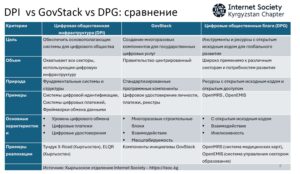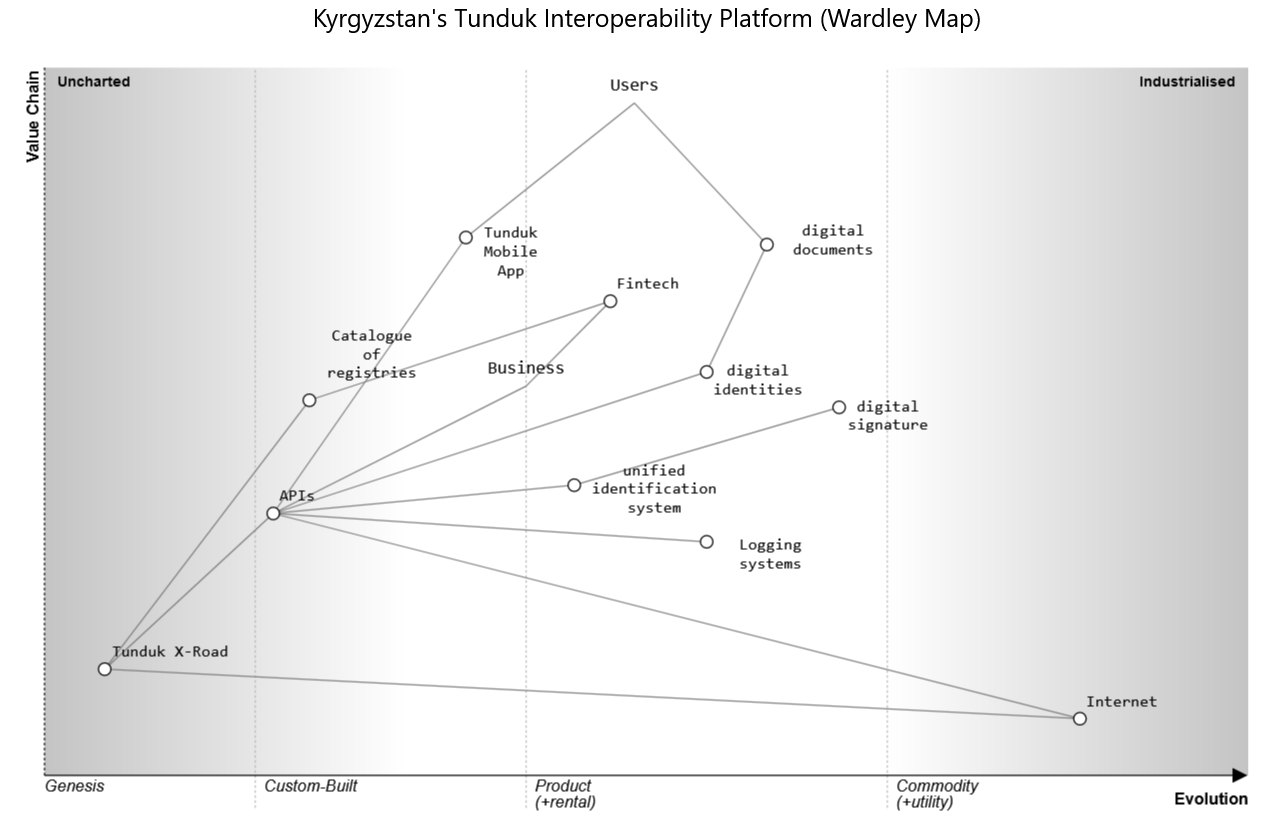As a presenter at the University of Central Asia’s Digital Forum, I had the privilege of sharing the insights of our research on the state of Digital Public Infrastructure (DPI) in Kyrgyzstan. This forum brought together thought policy makers, academia, and stakeholders dedicated to leveraging information technology for societal growth. Here, I’ll share the essence of my presentation and why DPI is critical for Kyrgyzstan’s digital future.
At first I’ve introduced the concept of DPI, origins of this term, application and provided comparative table of differences between DPI, Digital Public Goods (DPG) and GovStack, three terms popularly used in defining the digital transformation of public services.
Comparative Table: DPI vs GovStack vs DPG

At its core, DPI represents the foundational digital systems and services that societies depend on for seamless functioning in the digital age. During my presentation, I outlined three critical components:
- Digital Identity Systems: These provide secure and reliable methods for verifying individuals and organizations online, which is the foundation for trust in the digital realm. Kyrgyzstan introduced the unique identification system (UIS) back in 2019. The unique identification number of each citizen established a foundation for coordinated service delivery
- Data Exchange Systems: Platforms like Kyrgyzstan’s Tunduk based on Estonia’s X-Road, enable secure and efficient data sharing between government institutions and stakeholders. In Kyrgyzstan citizens widely confuses the interoperability platform with the Tunduk Mobile App, application used to store digital identities as well as request public services online.
- Digital Payment Infrastructure: Systems like the ELQR Payment System, which standardizes QR-code-based payments, ensure financial transactions are fast, secure, and inclusive.
These components are not just technological constructs; they are the building blocks of a connected and prosperous digital society.
The Current Landscape in Kyrgyzstan
During my talk, I highlighted how Kyrgyzstan has already made strides in DPI. I discussed the existing frameworks:
- Tunduk has revolutionized how government institutions interact, fostering data-driven decision-making.
- The Unified Identification System (EIS) gives citizens a secure, single-point entry to essential services.
- The ELQR Payment System has simplified financial transactions, making them more accessible and efficient.
Despite these achievements, there’s still room for growth. My assessment of Kyrgyzstan’s DPI readiness revealed gaps in areas like funding, community engagement, and interoperability. Addressing these will require coordinated efforts and a clear strategy.
Recommendations for Kyrgyzstan’s Digital Future
As part of my presentation, I proposed a roadmap to help Kyrgyzstan unlock the full potential of DPI:
- Modernize Infrastructure: Upgrade servers, network equipment, and storage solutions to ensure scalability and reliability.
- Strengthen Legal Frameworks: Develop comprehensive policies addressing data privacy and cybersecurity.
- Promote Interoperability: Integrate DPI systems across ministries and sectors, prioritizing collaboration between ministries and agencies with focus on socially vital areas such as healthcare and education. Our research found out that despite the growing number of transactions via Tunduk platform, most of the requests related to the State Registry Service and Infocom (over 80%), while data exchange between other ministries is insignicant.
- Empower Users: Provide training and support for educators, administrators, and other users to maximize the impact of DPI.
DPI in Education sector of Kyrgyz Republic
I devoted part of my presentation to the role of DPI in transforming education. Kyrgyzstan’s Ministry of Education has already adopted digital systems like OpenEMIS for data management and Sanarip Mektep (Digital School) for process automation. However, integrating these systems with platforms like Tunduk can further optimize data sharing, improve decision-making, and expand opportunities for schoolchildren, students and educators.
I concluded my presentation with a simple but urgent message: investing in DPI is investing in Kyrgyzstan’s future. It’s an opportunity to build a more inclusive, transparent, and innovative society. With collaboration and commitment, we can harness the power of digital transformation to empower citizens, strengthen institutions, and drive sustainable growth.
We, Internet Society Kyrgyz Chapter, plan to conduct series of online and offline detailed presentations about our findings to key stakeholders in upcoming weeks (2024).



